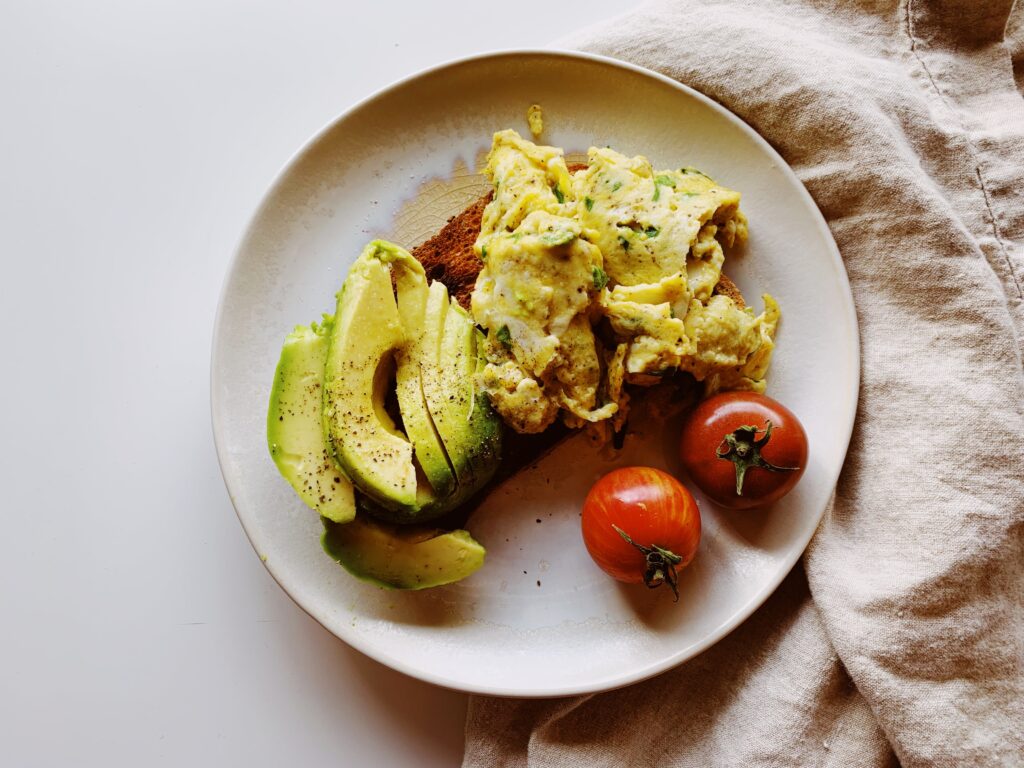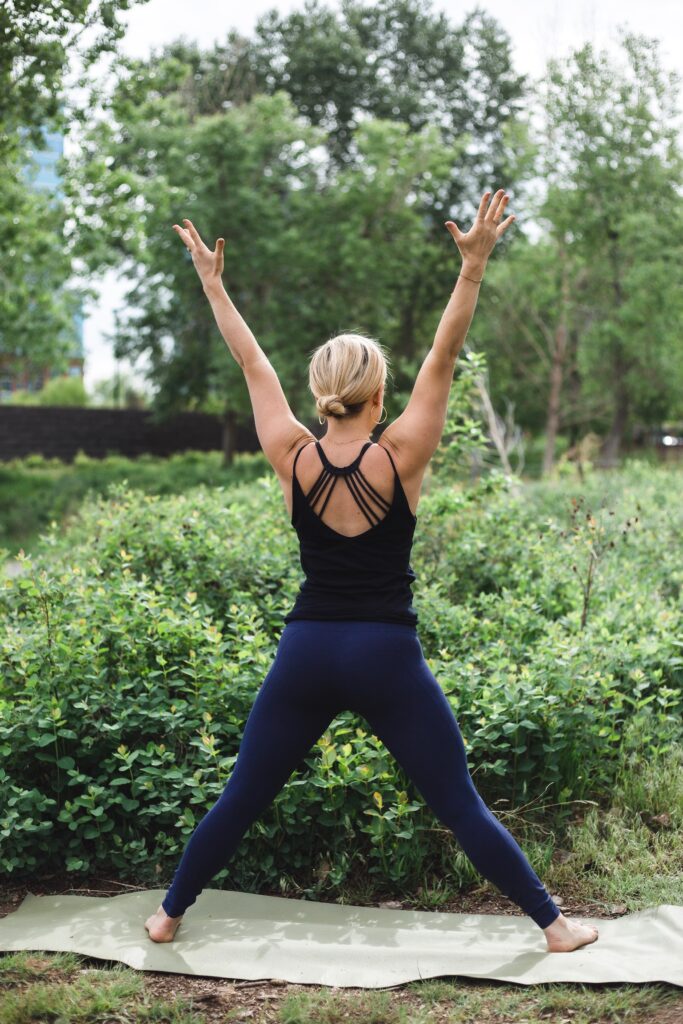Ever since I started wearing a continuous glucose monitor, I’ve learned what does—and doesn’t—send my blood sugar on a rollercoaster. Most findings? Not terribly surprising. For example, eating a protein and fat-forward breakfast keeps my blood sugar more stable throughout the day. Also, moderate exercise is a game-changer. Ultimately, the goal is to keep blood sugar as stable as possible. Doing so improves sleep, balances hormones, minimizes the risk of long-term illnesses, and much more! All of that said, you might be wondering how to keep your blood sugar stable. Specifically, how to lower blood sugar after eating. Grab your sneakers—the secret lies in a post-meal walk.

what is blood sugar?
Without knowing exactly what it means, you’ve probably heard of the term. As mentioned, it plays a role in energy, feelings, cognitive function, and more. In fact, you may already be familiar with spikes and dips in blood sugar. Hello, hanger! That said, few recognize its affects on a daily basis. For context, blood sugar is the amount of sugar (or glucose) in your blood at any given time. It’s the body’s main source of energy, produced when we break down any form of carbohydrate. Be it fruit, a slice of cake, or piece of toast, that carb is absorbed into our bloodstream. Immediately or eventually, carbohydrates are used as a source of energy.

Blood sugar flow
Need a visual? Here’s how blood sugar works:
1. You eat.
Suppose you eat a balanced combination of carbs, protein, and fat. Your digestion breaks down your food. Carbs get broken down into glucose. This is your body and your brain’s primary source of preferred energy.
2. Blood sugar levels rise.
Glucose enters your bloodstream and blood sugar levels naturally increase. How much they increase is dependent largely on the macronutrient breakdown of the meal. More carbs = higher blood sugar. More protein + fat = lower blood sugar spike.
3. Insulin RELEASES.
As soon as your body senses the rise in blood sugar, your pancreas releases insulin. Insulin is an important hormone involved in managing blood sugar levels. We want not too much, but also not too little.
4. Blood sugar lowers.
Insulin acts as the key to open your cells and transport glucose from the bloodstream inside cells. Glucose is either used immediately for energy or stored for later use. Insulin is what keeps blood sugar from getting too high. In terms of how to lower blood sugar after eating (faster), consider taking a post-meal walk.
how does exercise impact blood sugar?
More research is underway, but one thing is certain: when we’re active, our muscles process glucose like workhorses. In fact, exercise can boost glucose uptake by up to 50 times (compared to when we are sedentary). Said differently: when you exercise, muscles become more efficient at absorbing glucose. Your heart pumps more glucose-containing blood to your muscles and changes in chemical enzymes further support glucose’s transport. Through this magic, muscles use the glucose they need to power a workout, and our blood glucose levels drop. It’s a win-win.

The Power of walking it out
Low- to moderate-intensity activity—like brisk walking—appears best for keeping glucose levels in check after eating. When you take a walk after eating, you burn through glucose at a moderate rate. This helps curb a blood sugar spike. If you don’t have 15-30 minutes to go for a walk, don’t fret. Good news: shorter bouts of low-intensity movement are also effective at taming glucose surges! Walk up and down your stairs for a few minutes, do a short series of squats, dance in your living room, etc. House chores, like vacuuming, count too. Anything to get your blood flowing!
Don’t let concerns about timing, intensity, and duration stop you from making an effort. Any movement—rather than spending hours sitting at your desk—helps build a habit to support metabolic health.

Additional blood sugar tips
Need a few more suggestions to keep your blood sugar stable?
Choose complex carbohydrates: Opt for whole grains, legumes, and vegetables instead of refined carbohydrates (100% whole wheat pasta, as opposed to refined white flour pasta). Foods with a lower glycemic index release glucose more slowly, helping to prevent rapid spikes in blood sugar.
Include fiber-rich foods: Foods high in fiber—chia seeds, ground flax, leafy greens, berries, artichokes, etc.— can help slow down the digestion and absorption of sugars, leading to more stable blood sugar levels.
Add protein to your meals: This is key! Including lean proteins like poultry, fish, tofu, or legumes in your meals can help stabilize blood sugar levels and promote a feeling of fullness.
Stay hydrated: Drinking water can help flush out excess sugar from your bloodstream through urine. Aim to stay well-hydrated (with electrolytes) throughout the day.
Choose healthy fats: Incorporate sources of healthy fats, such as avocados, nuts, and olive oil, into your meals. These fats take longer to digest (minimally impacting blood glucose) compared to carbohydrates.
Don’t drink caffeine on an empty stomach: More on how this impacts cortisol, hormones, and can rapidly increase blood sugar levels here.
Control stress: This goes without saying, but chronic stress can contribute to elevated blood sugar levels. Practice stress-reducing activities like deep breathing, meditation, or yoga.
This article is for informational purposes only. It is not, nor is it intended to be, a substitute for professional medical advice, diagnosis, or treatment and we recommend that you always consult with your healthcare provider.



Leave a Reply